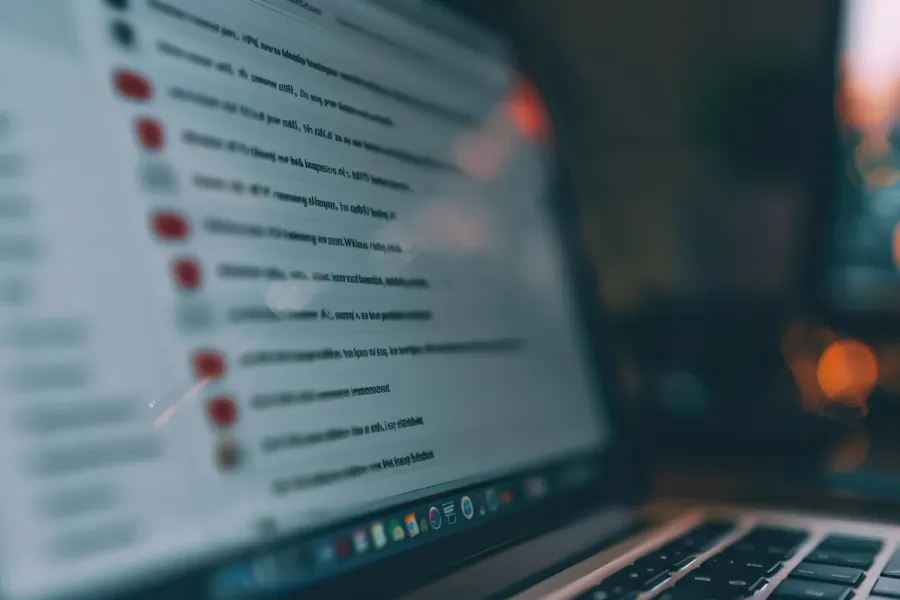
The average person receives about 121 emails per day. That's a lot! No wonder most of us have a massive backlog of unread emails, which only makes it harder to reach Inbox Zero.
What's more, over a third of people leave their unread messages as is, leading to a disorganized inbox that inhibits productivity.
Luckily, streamlining your Gmail account is possible. In this article, we'll cover some tried-and-true methods for cleaning up your inbox.
How to find unread emails in Gmail
As much as a quarter of all email accounts are run on Gmail. It's easy to use, full of features, and provides a free and accessible way to interact with the online world. For professionals, Google Workspace turns Gmail into a solid work email option.
Among Gmail's many features is the ability to search and filter messages. You can locate and deal with a single email or take bulk action on many emails.
How to handle unread emails in Gmail
To get started, open your Gmail account on your browser. Using Gmail on a computer gives you the most control, whereas the app only provides the most basic parts of the search and filter features.
Log into your Gmail account by clicking the user icon at the top right corner of the screen.
To view what emails are currently unread, click on the search bar within your account and enter "is:unread." This view shows the unread emails in your inbox.
For most people, this list will be (much!) more than a page long. We'll discuss some steps you can take to reduce that number.
Organize emails
If you see similar senders, click on one of their emails to start organizing them. You should open one email first before you determine what action to take.
These actions include:
- You can delete an email that you no longer need.
- You can archive emails you don't want to delete but don't need in your inbox, so they're still retrievable later.
- You can apply filters, block the sender, report the message as spam, or report a phishing attempt. All these options can be found by clicking the three vertical dots at the top right of a message.
Go through each email in your inbox and take one of the above actions as needed. Creating rules in Gmail to filter messages from certain senders is a simple and powerful way to reduce the future bulk that you receive.
Labels and folders
Gmail's ability to sort emails with labels and folders is one method for dealing with recurring messages which you want to manage the same way each time.
As you look through your emails, click the three vertical dots at the top right side and opt to filter messages like these. Gmail will then display all emails from this exact address in the "from" field. You can edit the "from" address to just the @domain.com to target all emails sent by that domain.
Next, click the "create filter" button to select the actions you want to take on these emails in the future. Peruse the available filters, labels, and actions to decide which is best. Once you've made your selections, create your filter. All future emails from that sender will have that action applied to them.
Bulk action on emails
If you need to mark all emails from a sender as read or move them to a label, bulk action is for you.
Click on one of the emails from the sender and click the three dots in the upper right-hand corner. Filter messages like these, then click the blue search button. Next, click the empty checkmark box at the top of the screen. This will select all the displayed emails.
If there is more from the sender than what is displayed, you can click the text that reads, "Select all conversations that match this search." This option allows you to take action on every email from this exact sender in your inbox.
You can then click the trash icon to delete every email message, archive them, add a label, or mark them as important.
Eliminate email anxiety with Superhuman
Superhuman is the fastest email experience ever made. With Bulk Unsubscribe, we make it easy to unsubscribe from unwanted emails. Just hit Cmd+U (Mac) or Ctrl+U (Windows), or simply swipe down and tap Unsubscribe if you’re on mobile.
You can also use Get Me to Zero, which saves messages older than seven days to the "Done" folder, where they are always searchable and never deleted. We make it easy for you to practice the Inbox Zero method and spend less time in your inbox.
The final word
Unread emails in Gmail don't need to clog up your inbox and add to that ever-growing "unread" count. Using the options we laid out in this article, you can take back control of your inbox.
Superhuman is the most productive email app ever made and works seamlessly with Gmail and Outlook accounts. Fly through your email twice as fast as before, reply two days sooner, and save more than four hours every single week.




